'They change lives'
The impact of assistance dogs

The positive impact of pets on people's lives is a topic many would agree on.
Though vet fees can add up and training and walks may take hours from one's life, pet owners usually find their mental and physical health improves because of regular exercise and increased sociability.
Indeed, a University of Lincoln study found that pet ownership saves the NHS £2.4bn a year - a sum that cannot be understated in the context of NHS funding crises and shortages.
Yet, the impact of assistance dogs in particular is a topic that deserves more public recognition.
Occasionally the subject comes to the fore such as in the recent news about a woman who gave birth with her medical detection dog by her side.
But more awareness is needed about assistance dogs to ensure the public understands them, and so that more people can get access to these dogs as charities struggle to cope with rising demand.
Waiting times for charity-trained assistance dogs can be more than two years and their training can cost more than £20,000, leading to questions of funding and how to increase availability.
When we think of assistance dogs the first image that comes to mind is usually that of a guide dog, but there are many other categories of assistance dogs.
So just what is an assistance dog?
Title video credit: Blanca Schofield
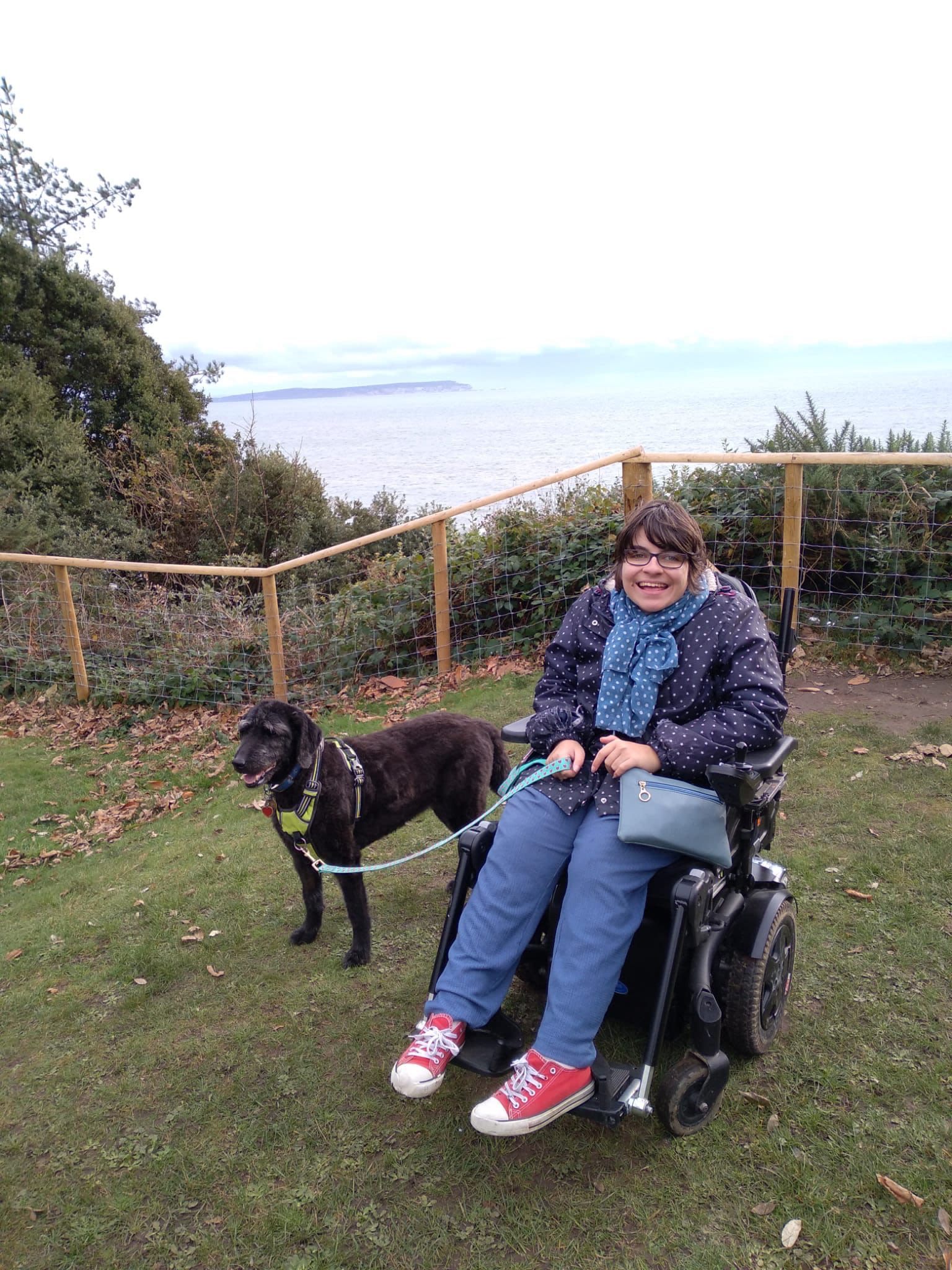
Credit: Natalie Hibberd
Credit: Natalie Hibberd
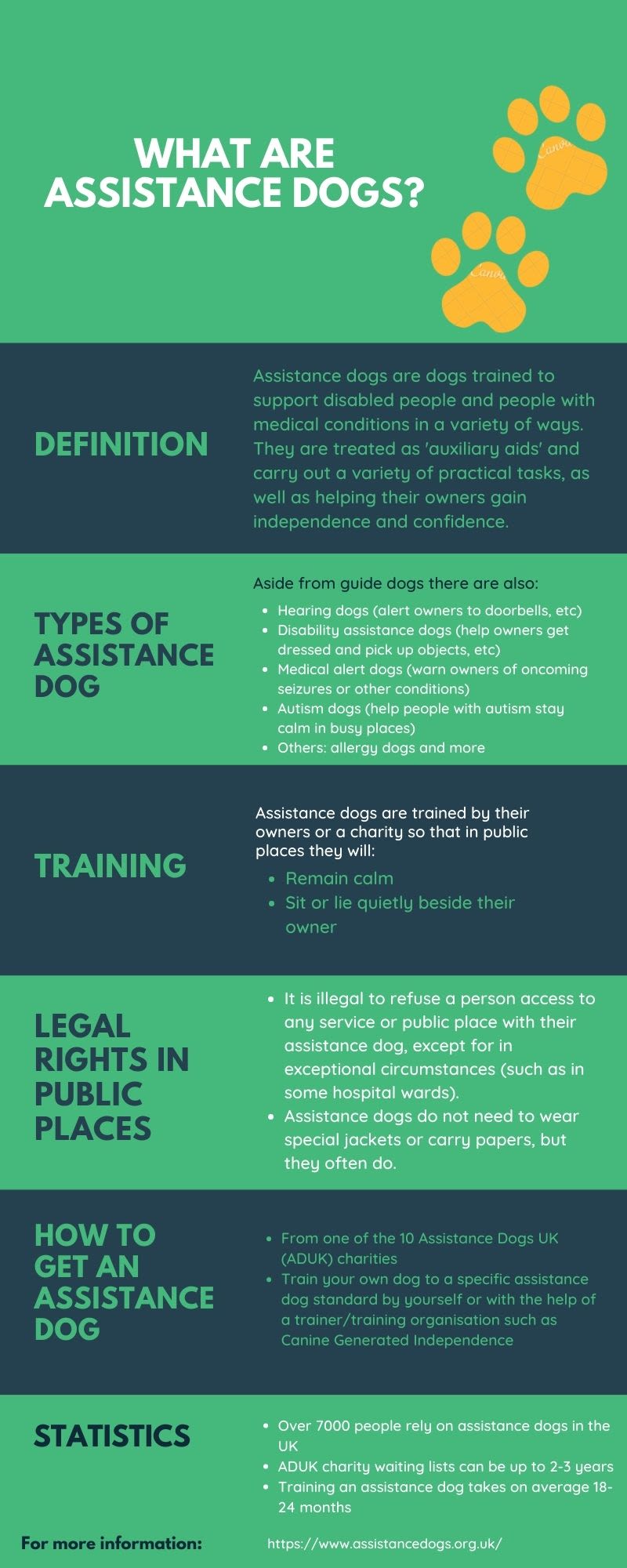
In order to give a more vivid portrayal of the impact of assistance dogs on people's lives, SW Londoner spoke to four owners who have assistance dogs for different medical needs and who either acquired or trained them through different organisations.
Photo credit: Dogs for Good
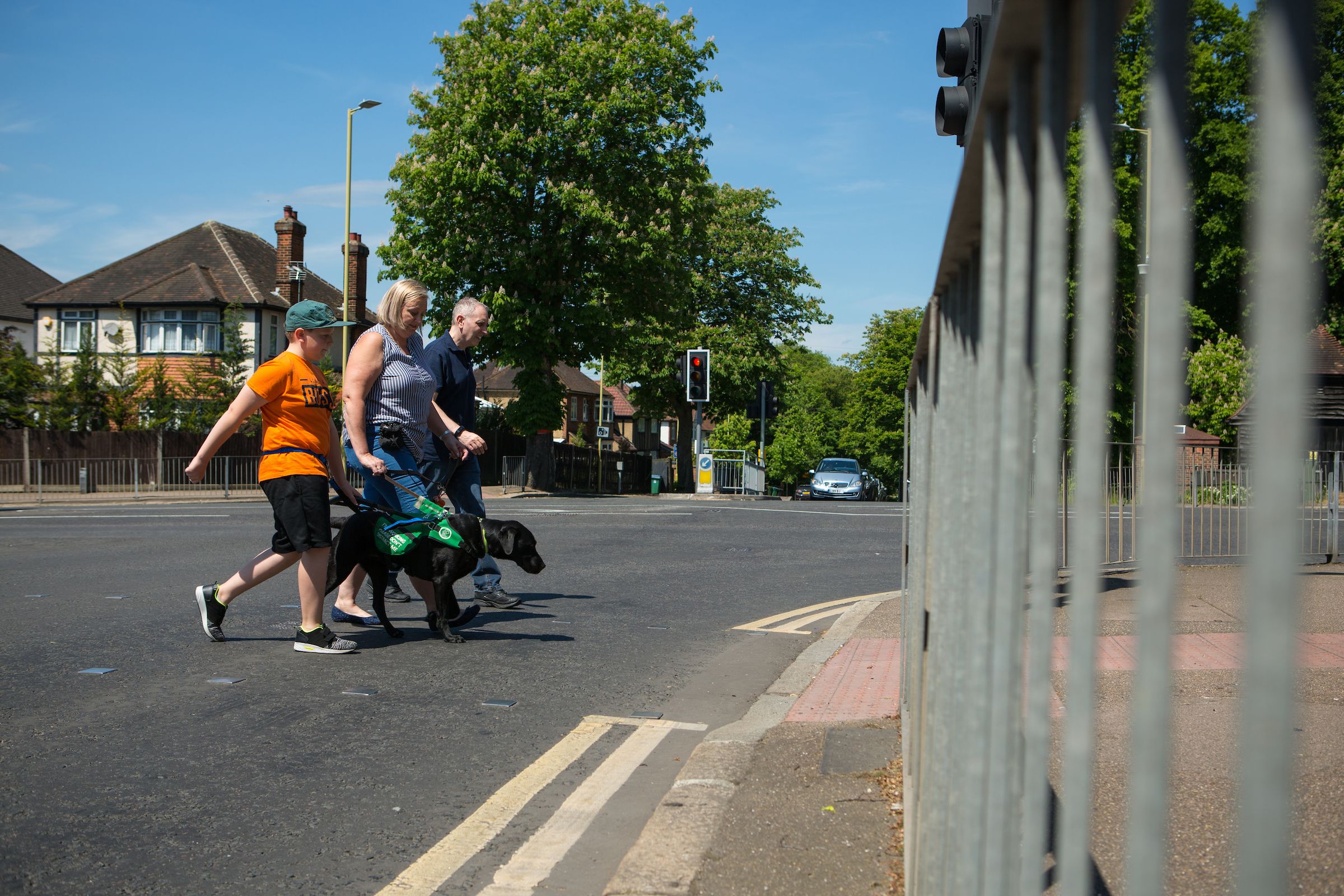
ASSISTANCE DOGS FOR PHYSICAL DISABILITIES
Natalie Hibberd's story
"Assistance dogs change lives. I split my life into pre and post Cleo and they're poles apart: post Cleo has a lot more levity and confidence and joy."
When Natalie, 23, was 18 her mum decided to get her a pet dog as a companion.
"I've suffered from depression for most of my life and I was having a bad episode and needed something to give me a reason to get out of the house," said Natalie.
Though initially Cleo was just a pet dog, after a year or so Natalie decided to look into training her to be an assistance dog for her cerebral palsy.
With the help of her mum she applied to Support Dogs and managed to get Cleo onto the training programme for assistance dogs for physical disabilities.
This involved sending Cleo away for one month and then joining her for two weeks in Sheffield for intensive training, followed by another 18 months of training at home.
Now, alongside the emotional support she provides, Cleo can help Natalie with practical tasks such as getting dressed, opening doors and picking things up.
Natalie is passionate about the positive impact Cleo has had on her mental health and the independence she has given her.
"If I didn't have Cleo, I would definitely require a lot more hours of human care."
Natalie argues there should be government funding for assistance dogs, given how much they help disabled people and how they could save the healthcare system time and money.
She also links this to the need to focus on increasing disability rights and analysing how accessible public life is for disabled people.
"I don't really think enough attention is paid to equality for disabilities.
"Living in the UK as a disabled person is a very difficult thing to do. You kind of feel like the world is not built for you.
"It’s an odd thing being physically disabled because you’re invisible, but also everybody’s looking at you all the time - but what they’re looking at is the wheelchair and not the person in it and the value that person has."
Listen to Natalie speak about her experience:
Watch some examples of Cleo helping Natalie in the video below:
Video credit: Natalie Hibberd (edited by Blanca Schofield)
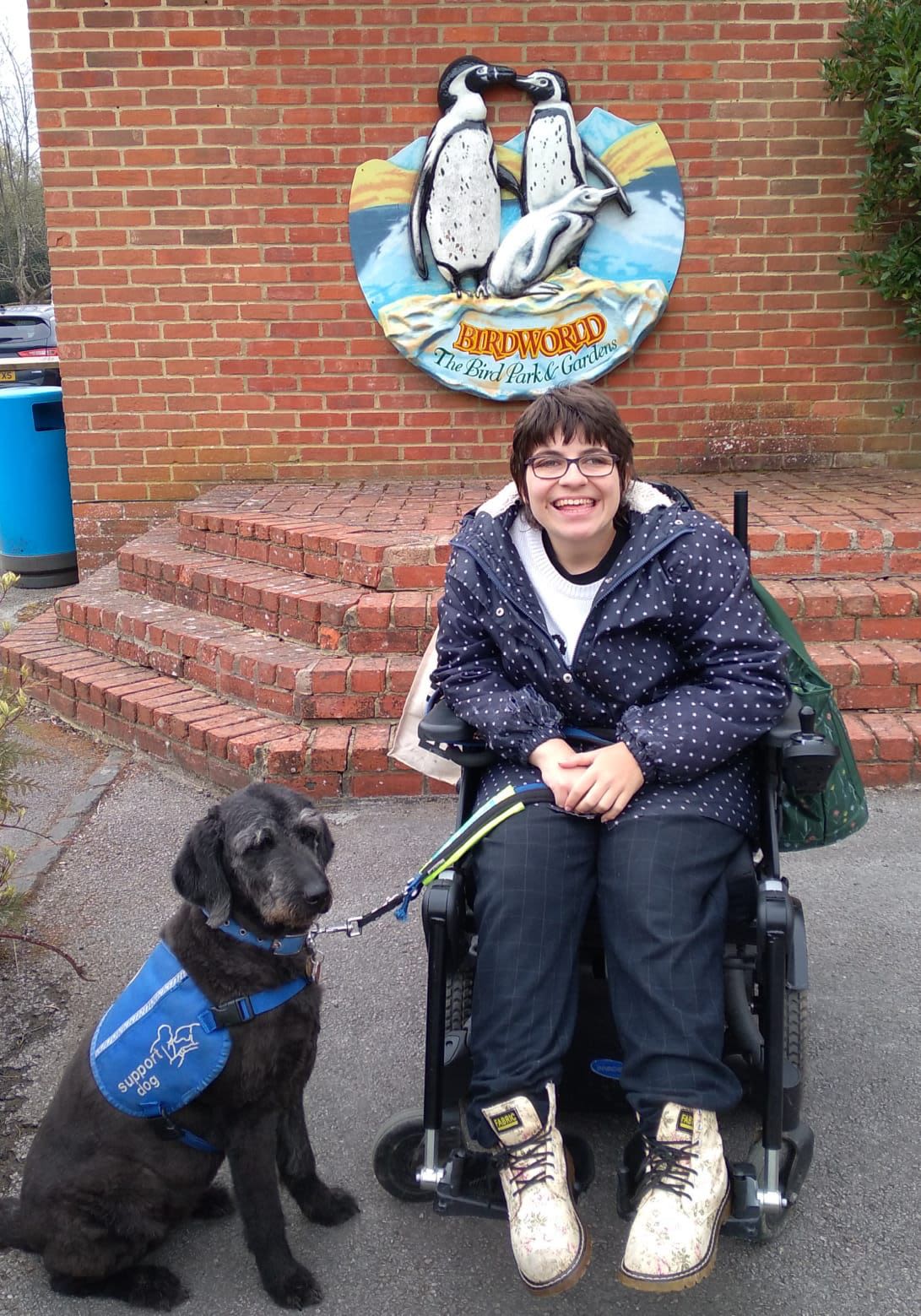
HEARING DOGS
Gaynor Tilby's story
"I can't capture what these dogs mean as a deaf person."
Gaynor, 53, had always known about hearing dogs and loved the concept of having one, but her lifestyle was never right for it.
Then, 15 years ago Gaynor retrained as a probation officer and it finally felt like the perfect time to apply for a hearing dog. She matched with her first dog Indigo in 2012 through Hearing Dogs and when Indigo retired she got Velma.
She said: "Their main service is raising awareness of my disability out and about.
"When I am meeting lots of people I have to explain every time that I am deaf and make sure people are looking at me so I can lip read. Their jackets are a lovely big badge to make people aware."
At home, Velma also helps Gaynor by alerting her to sounds such as timers, alarms and door bells.
She added: "It's about feeling safer at home. I also used to have to hover by the window when I was waiting for someone or a delivery.
"Now, when the sounds go off the dog comes up to me and nudges me and takes me to the sound. If there is an alarm they put their paws up or lie down for a smoke alarm."
Just like Natalie and Jo, Gaynor found the kindness of strangers increases when they see her assistance dog.
However, one of the difficulties for deaf people in the last few years has been increased mask-wearing because of COVID19.
"This has been a real struggle," said Gaynor.
In fact, Hearing Dogs UK spokesperson David Robson said the charity has seen an increase in applications for dogs during the pandemic.
He said this increase came in two phases: "When COVID first hit, a lot of people with hearing difficulties saw they needed help, perhaps because of masks and more home deliveries.
"Then, when everyone started going out into public places again they felt socially excluded - hearing dogs help with all of these issues."
Gaynor added: "As a probation officer, my dogs cross the bridge with people I work with. They've even enhanced the work as well.
"Deafness is an invisible disability and can be very isolating. It's fantastic to have Velma there - she is a wonderful stress reliever."
Photo credit: Hearing Dogs
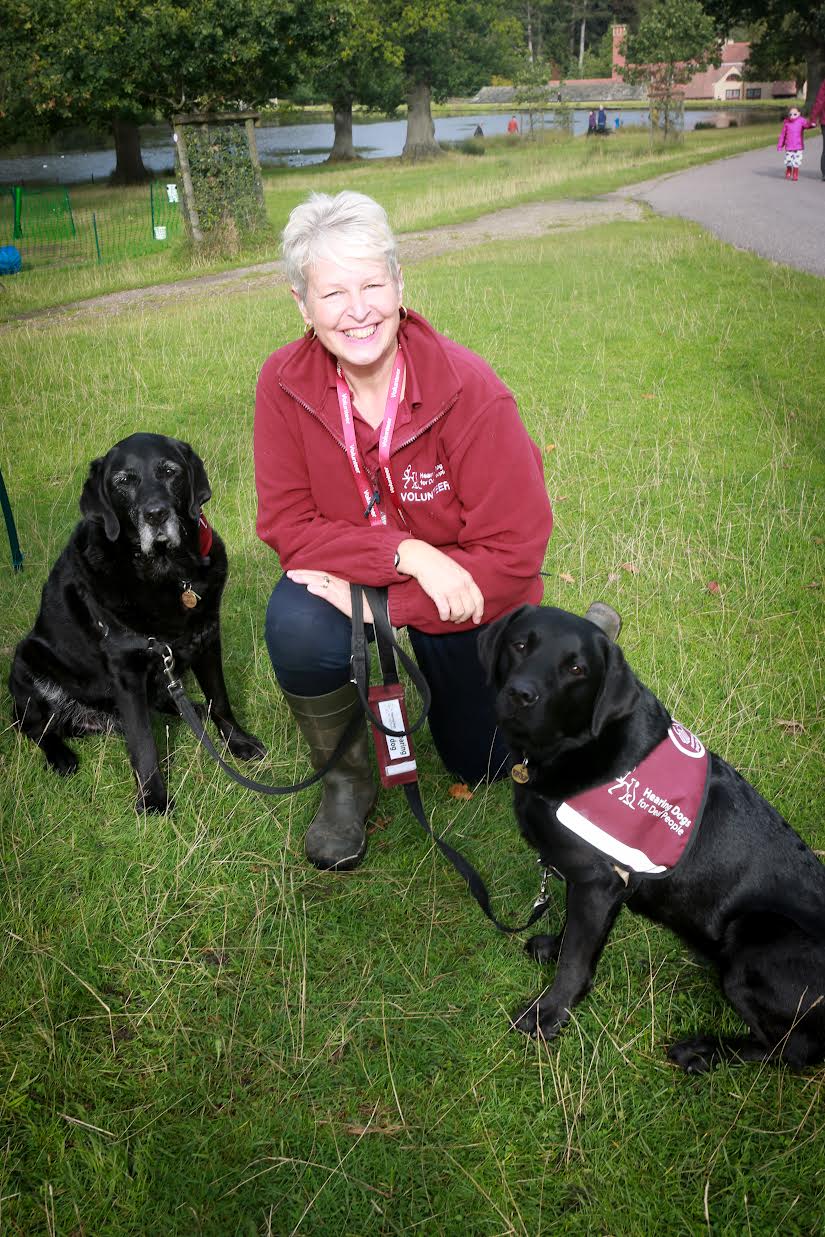
AUTISM DOGS
Ben Simmons' story
"Having Cyrill has given us our life back."
Ben, 14, was diagnosed with autism when he was two after his mum Jo noticed he avoided eye contact and was not doing the usual toddler babbling.
As a result of his autism, Ben struggles to socialise and to go outside as he gets overwhelmed by noises and also finds it difficult to understand roadside dangers.
This made him and his family "prisoners in their own home", according to Jo.
So, in 2014 when a friend from Ben's special needs school brought up assistance dogs - specifically autism dogs - to Jo and suggested the charity Dogs for Good, she started doing some research.
The whole process took about two and a half years with the medical checks and training and then their new black lab Cyrill finally moved into their home.
Ben now goes everywhere with Cyrill on a harness and Cyrill alerts him to dangers and calms him down in overwhelming situations.
Jo said: "It's hard to express how amazing he has been for us."
She also highlighted how people's attitudes towards Ben have changed.
Now that he has an assistance dog, if he gets overwhelmed in certain situations people understand he is struggling rather than look at him as if he were a "naughty boy".
Listen to Jo elaborate on Cyrill's impact on their lives in the audio clip below:
Photo credit: Dogs for Good
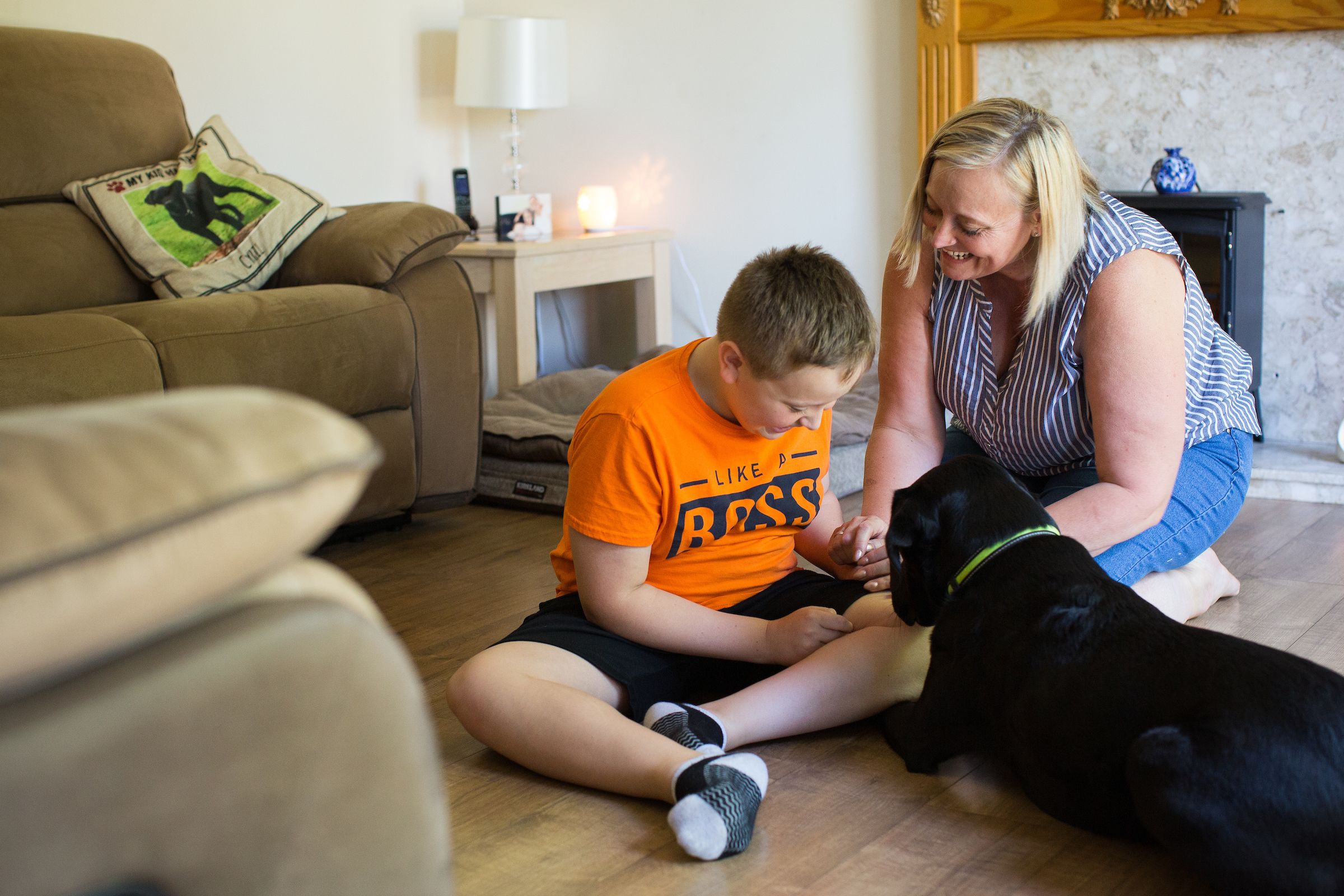
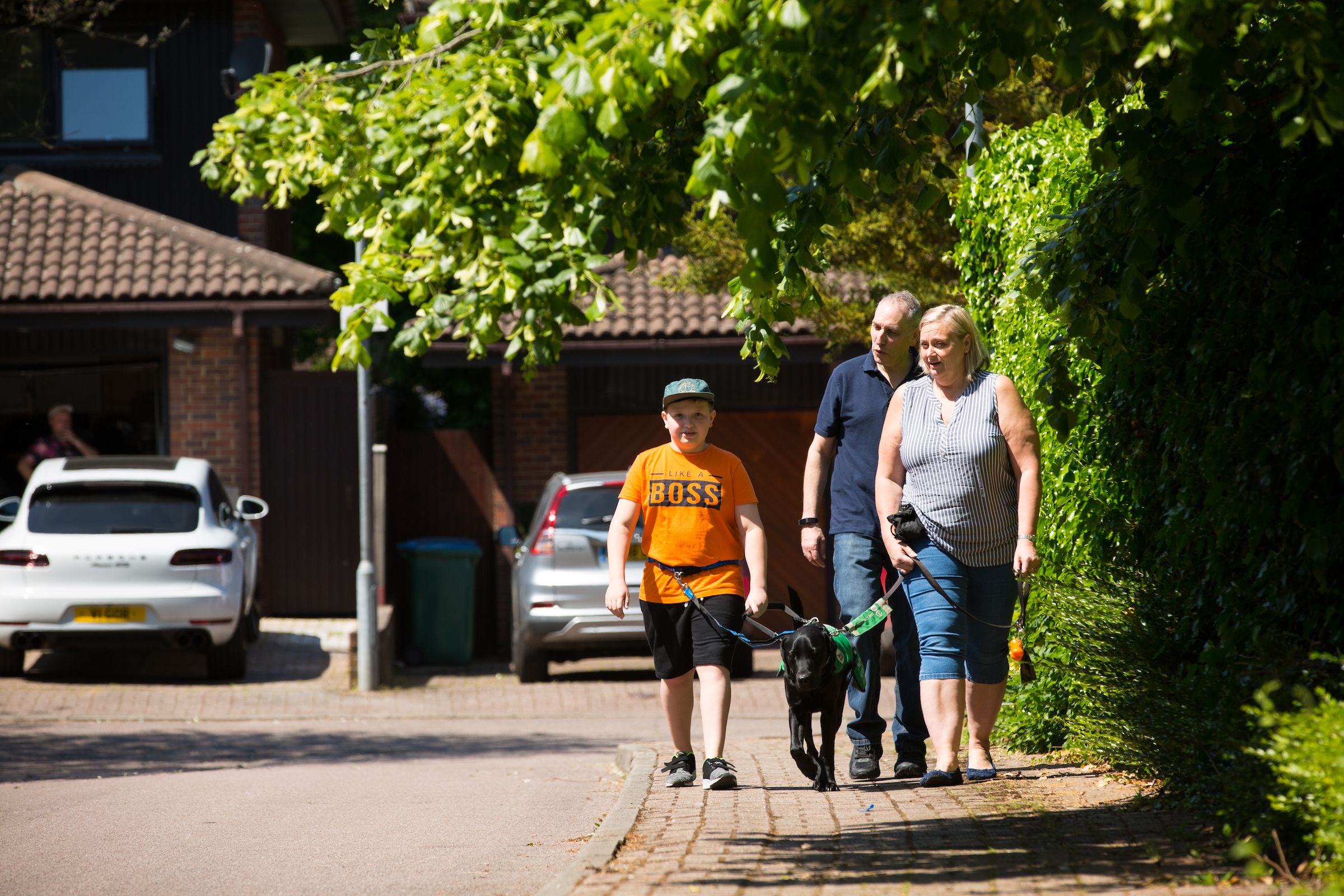
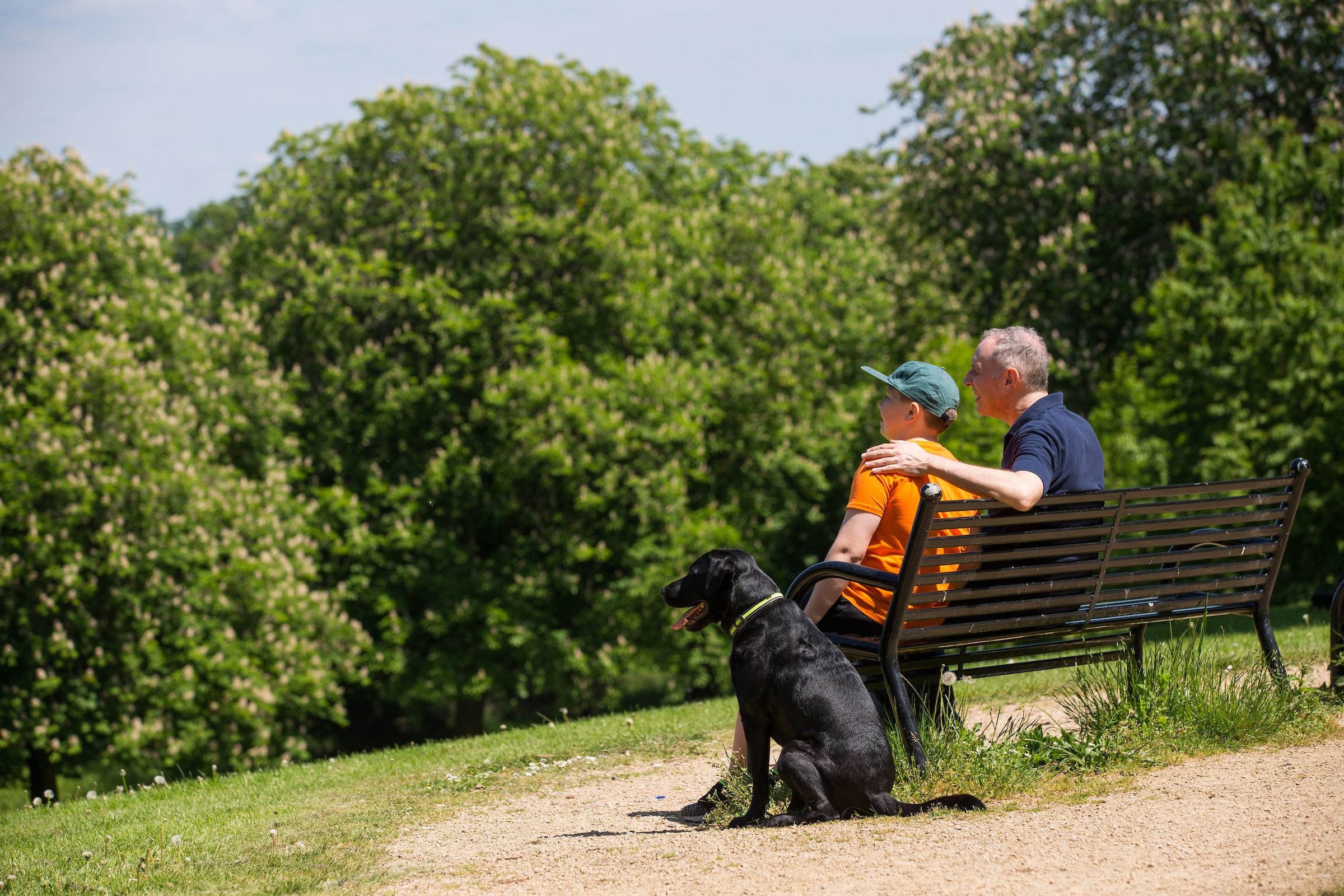
MEDICAL ALERT DOGS
Robert Stuhldreer's story
"There should be a recognised funding for assistance dogs."
Professional dog trainer Robert, 60, has not only trained his akita inu Kin to be his medical alert dog for his epilepsy, but also to appear on screen in various films.
His history with assistance dogs started when he noticed that his first akita inu Flora would warn him of his oncoming seizures without him having trained her to do so.
Robert then decided to get in contact with Canine Generated Independence, a not-for-profit organisation helping people training their own assistance dogs set up by those despairing about long charity waiting times.
This includes public access training, which means making sure the dog is healthy and can act safely in a public environment, staying calm in whatever context.
According to a study in Scientific Reports seizure alert dogs can detect a change in their owner's scent before a seizure and then warn their owner.
Kin communicates the oncoming event of a seizure to Robert with distinctive signals:
- At home she will come and sit directly in front of him and give him direct eye contact.
- When they are out, her first signal is to stop dead. If he ignores this, she will walk directly in front of him and block his path. Her final signal is to take his hand in her mouth and pull it slightly downwards.
Robert said: "Before I had Flora and Kin I wouldn't have any idea when the seizures were going to happen.
"I suffered quite a lot of injuries - I've broken my nose, my cheekbone, my shoulder, I've had numerous head injuries - all of which I've had to go into the hospital for."
Flora and Kin's abilities are such that they have even been recognised by the People's Pet Awards 2021 where they won Caring Animal of the Year.
Robert added: "With Flora and Kin because their success rate is 100% I've not had one unplanned visit to hospital."
Photo and videos credit: Blanca Schofield
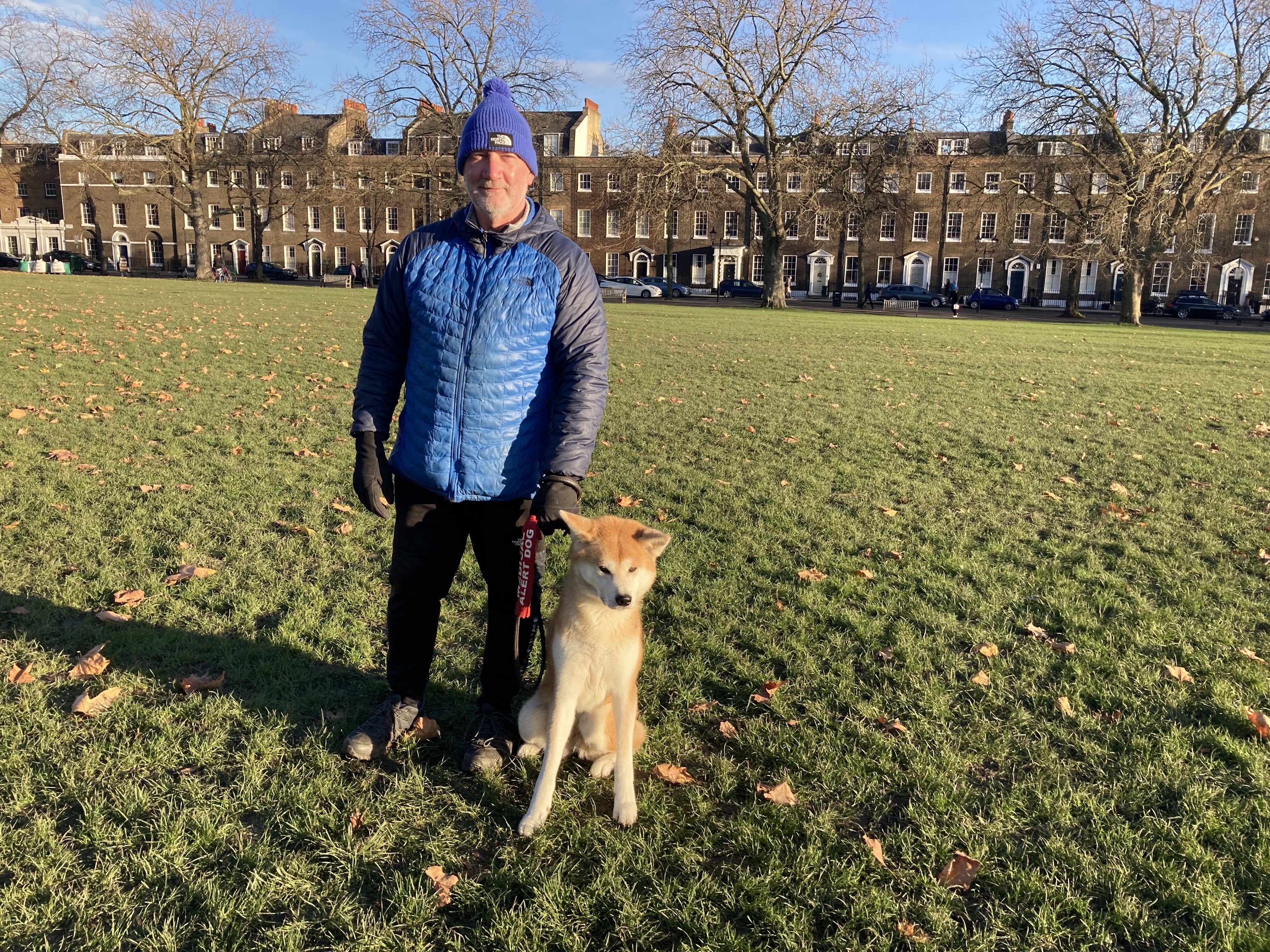
What does the future hold for assistance dogs?

The impact of COVID19
Pre-pandemic waiting times for charity-trained assistance dogs were already high because of increasing demand.
COVID19 has exacerbated this situation as in-person training had to be postponed and thus new applications had to be paused.
This begs the question: how can access to assistance dogs be improved?
Training assistance dogs
There is no fixed training standard that an assistance dog has to adhere to by law or any jacket or paperwork it needs to wear or carry in order to qualify as an assistance dog and be allowed into restaurants, etc.
Though all ADUK charities including Support Dogs, Dogs for Good and Hearing Dogs are accredited by Assistance Dogs International, accreditation is not strictly necessary for an assistance dog.
Therefore, in theory any owner or organisation could train a dog as an assistance dog without having to pass any test or accreditation for it to qualify as one.
It can be argued that this flexibility increases access to assistance dogs given the long charity waiting times and should be fostered so as to encourage owners to train their dogs themselves or with the help of a trainer.
In other words, there should be a normalisation of "owner-trained" assistance dogs without the pressure of a required accreditation.
This is the view taken by Sharon Lawrence, an activist who helped write the Equality and Human Rights Commission guide "Assistance dogs: a guide for all businesses".
In Sharon's opinion there should not be a fixed standard of training - instead, she would like to see a "blue badge" scheme where any dog would qualify as an assistance dog if their owner had proof of disability.
She said: "It's nowhere near accessible enough at the moment. It makes it more accessible if you can train your own dog.
"Nobody checks if a non-disabled person is correctly training their dogs, so don't come down on us."
Yet there are others, such as Selina Valentine - a trainer from Canine Generated Independence, who believe otherwise.
She said: "As a disabled person I think you should be able to train your own dog and it should be optional to get them assessed.
"But as a dog trainer I do think they should be assessed as they are not all suitable for doing the job."
Peter Gorbing, CEO of Dogs for Good, has a similar opinion on the importance of a set standard for owner-trained dogs.
He said: "The more people who have assistance dogs the better, but the dogs need to be trained. I'm looking to set up an organisation to offer people to assess their dog against a standard and give people peace of mind.
"Paperwork would be helpful. Some people struggle to get public access rights because of a lack of clarity."
According to Peter, it would be easier to create a consistent set of guidelines for service providers - such as the aviation industry - if there was this established training standard for all UK assistance dogs.
He added: "There is a misconception that the ADUK organisations think they they are the only ones who should train assistance dogs, but this is not the case. Yet ideally there would be structures in place to make it safer for people and dogs."
As this debate about training standards continues, the question of funding remains - namely, should there be government funding for assistance dogs?
Funding assistance dogs
Peter Gorbing said: "Everyone talks about the importance of preventative health care, but actually it's quite hard to get funding for it."
Currently, assistance dog owners and charities receive no specific funding from the government, aside from an isolated amount given to Medical Detection Dogs for their COVID19 detection dogs research.
The Department for Health and Social Care did not respond to a request for comment on this issue.
